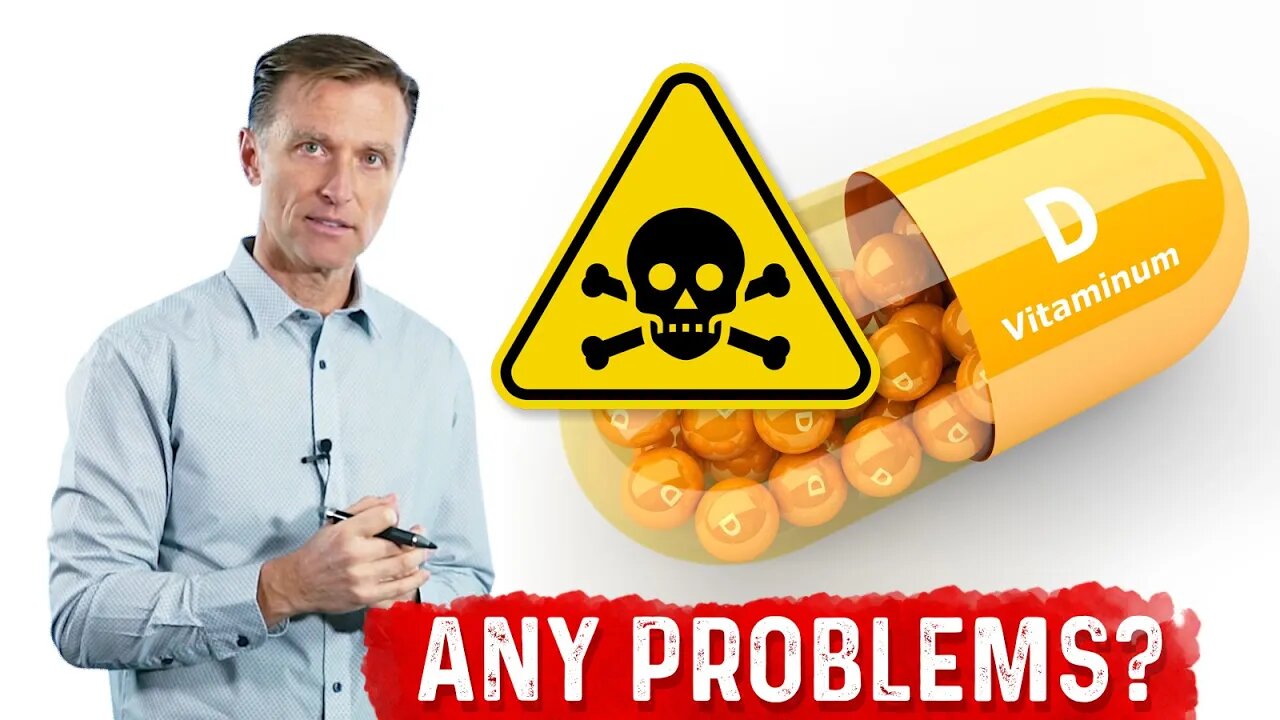Premium Only Content

Vitamin D Toxicity: Is This a Danger?
Should you be afraid of taking too much vitamin D? Find out.
DATA: https://vitamindwiki.com/Overview+Toxicity+of+vitamin+D
https://www.mayoclinicproceedings.org/article/S0025-6196(15)00244-X/pdf
Is 10,000 IUs of vitamin D toxic: https://www.youtube.com/watch?v=q2glDkfDUiM
Timestamps
0:10 Vitamin D toxicity—history
2:11 Should you be worried about vitamin D toxicity?
2:31 What is vitamin D toxicity?
2:48 Should you take less vitamin D?
3:10 Autoimmune conditions and vitamin D
3:19 Reducing the risk of kidney stones
In this video, we’re going to talk about vitamin D toxicity. Some people are afraid of taking too much vitamin D, when it may not be as scary as you might think.
According to an article by the Mayo Clinic, vitamin D may not actually be as toxic as was once believed.
In the 1940s, vitamin D was used for rheumatoid arthritis. But, the amounts being used were between 200,000 and 300,000 IUs of vitamin D. The reason this could have helped is that vitamin D helps support the immune system and helps lower inflammation.
In the 1950’s they were fortifying products like dairy products with vitamin D. But, there were some complaints from parents with children who had side effects. The fortification of vitamin D in dairy was banned in Europe, but not in some other countries, including America.
Years later, it was discovered that these children might have experienced these side effects due to a rare genetic disease called Williams syndrome. With Williams syndrome, you don’t actually want to take vitamin D at all.
Now, when you look at vitamin D, it always says something along the line of “don’ take too much, you could experience a toxic effect.”
But, according to this article by the Mayo Clinic, it would take getting 50,000 to 100,000 IUs of vitamin D for months to years before vitamin D would become toxic. This is actually a lot more than what most people consider toxic.
When talking about vitamin toxicity, we’re referring to hypercalcemia, which is too much calcium in the blood.
When people are afraid of vitamin D toxicity, they end up taking smaller amounts like 1,000 to 2,000 IUs per day. But, with this amount, it could actually take four months or more to bring a vitamin D deficiency up to a normal level.
If you want to decrease the potential risk of kidney stones, you could drink 2.5 liters of fluid every day, avoid taking calcium and avoid dairy.
Talk to a Product Advisor to find the best product for you!
Call 1-540-299-1556 with your questions about Dr. Berg's products. Product Advisors are available Monday through Friday 8am-6pm and Saturday 9am-5pm EST.
* At this time, we no longer offer Keto Consulting and our Product Advisors will only be advising on which product is best for you and advise on how to take them.
Dr. Eric Berg DC Bio:
Dr. Berg, age 56, is a chiropractor who specializes in Healthy Ketosis & Intermittent Fasting. He is the author of the best-selling book The Healthy Keto Plan, and is the Director of Dr. Berg’s Nutritionals. He no longer practices, but focuses on health education through social media.
Follow us on FACEBOOK: fb.me/DrEricBerg
Send a Message to his team: m.me/DrEricBerg
ABOUT DR. BERG: https://bit.ly/2zX0J0y
Disclaimer:
Dr. Eric Berg received his Doctor of Chiropractic degree from Palmer College of Chiropractic in 1988. His use of “doctor” or “Dr.” in relation to himself solely refers to that degree. Dr. Berg is a licensed chiropractor in Virginia, California, and Louisiana, but he no longer practices chiropractic in any state and does not see patients so he can focus on educating people as a full time activity, yet he maintains an active license. This video is for general informational purposes only. It should not be used to self-diagnose and it is not a substitute for a medical exam, cure, treatment, diagnosis, and prescription or recommendation. It does not create a doctor-patient relationship between Dr. Berg and you. You should not make any change in your health regimen or diet before first consulting a physician and obtaining a medical exam, diagnosis, and recommendation. Always seek the advice of a physician or other qualified health provider with any questions you may have regarding a medical condition.
Thanks for watching! I hope this video helps you better understand vitamin D toxicity.
-
 0:24
0:24
Dr. Eric Berg
3 days agoIs RFK Jr. Really Against Advancements in Health?
4.83K11 -
 57:43
57:43
The StoneZONE with Roger Stone
2 hours agoWhat Will The JFK Assassination Files Reveal? | The StoneZONE w/ Roger Stone
11.5K7 -
 18:24
18:24
Tundra Tactical
5 hours ago $3.16 earnedWhats New With HRT Tactical Gear at SHOT Show 2025
27.2K4 -
 23:27
23:27
Rethinking the Dollar
4 hours agoWealth Protection SECRETS Learned from Wildfires w/ Paul Stone
16.8K3 -
 LIVE
LIVE
Flyover Conservatives
21 hours agoInsider Reacts to Trump’s 100 Hours: Davos, WHO, Climate Change, DEI… - Alex Newman | FOC Show
904 watching -
 1:04:30
1:04:30
Battleground with Sean Parnell
8 hours agoPresident Trump Is Flooding The Zone
93.8K9 -
 LIVE
LIVE
We Like Shooting
14 hours agoWe Like Shooting 595 (Gun Podcast)
113 watching -
 LIVE
LIVE
megimu32
3 hours agoON THE SUBJECT: 90s Toys, Fat Phobia, and Crying Libs!
153 watching -
 LIVE
LIVE
Right Side Broadcasting Network
11 hours agoLIVE REPLAY: President Trump Addresses House GOP in Doral, FL - 1/27/25
4,727 watching -
 2:37:19
2:37:19
Robert Gouveia
6 hours agoTrump Addresses House Republicans; Tulsi Confirmation Fight; CIA Lab Leak
42.6K21